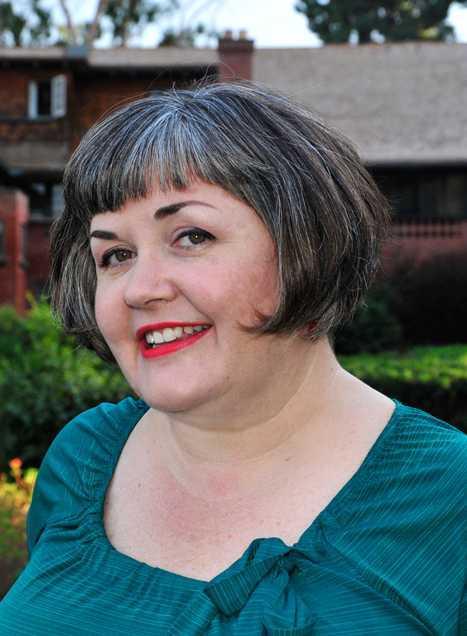|
SOHO President's Message
January/February 2018
By Jaye MacAskill
 Greetings! It is my pleasure to wish you a happy 2018! At SOHO, we are looking forward to a great year ahead with many important goals that we plan to accomplish in the coming months. Greetings! It is my pleasure to wish you a happy 2018! At SOHO, we are looking forward to a great year ahead with many important goals that we plan to accomplish in the coming months.
SOHO was founded in 1969, and as you may have noticed, the world has changed quite a bit since then. Over nearly five decades, SOHO has evolved into a very large organization that includes not just historic preservation advocacy, but extensive educational programming and the operation of nearly a dozen historic house museums and sites.
In recent years, the SOHO board of directors and staff have made major strides in bringing our operation up to date: adopting best practices of the non-profit world, adapting to new technologies and new government regulations, and accommodating the ever increasing number of employees, volunteers, and members who make such a broad range of activities possible. Along these lines, if you haven't visited the SOHO website lately, please take a look! We recently installed a comprehensive system of online forms designed to help members and the public make requests and find information, such as requesting a speaker or learning about ways to donate to SOHO. We are excited that this new tool will make contacting SOHO easier and more convenient, while saving vast amounts of staff time.
Now that 2018 is officially upon us, we have begun planning for next year's milestone 50th anniversary celebration. Being younger than the organization itself, it is humbling to think SOHO has been around such a long time! Countless past members played a crucial part in saving many of San Diego's treasured historic resources. So I often wonder how many of these buildings and sites would have survived had SOHO founders Robert Miles Parker and Carol Lindemulder not called an informal meeting on the first day of 1969, attempting to stop the demolition of a grand old Victorian in Bankers Hill. The city was then emerging as more than a sleepy little navy town, so-called "urban renewal" was cutting a path of destruction here and across America, and historic preservation was essentially a new concept.
On the occasion of SOHO's 20th anniversary, late SOHO board member and historian Kathleen Flanigan wrote about the local climate at the time of the group's founding:
The El Cortez Hotel still towered over the downtown skyline and local decision-makers were struggling to identify the appropriate avenues to ensure that San Diego would continue to meet the needs of its people as an attractive and viable city.
What became apparent was that local decision-makers did not recognize the city's older and historic building stock as an important resource. In relation to the East Coast, San Diego's architectural heritage is comparatively young; but it is still our heritage. SOHO continues to be hindered by this handicap today. In continuing to define the preservation climate on a national level, many eastern cities were just beginning to introduce ordinances that would protect their historic buildings in the late 1960's, with mild acceptance from their general populace. Preservation, to the public, meant historic plantations and cultural interpretive parks, such as Williamsburg. The concept of protective districts and adaptive re-use had yet to become part of the developers' and design professionals' vocabulary.
In San Diego, when a group of visionary people met on January 1, 1969, to save a Victorian house, the National Trust for Historic Preservation was just starting to organize a Western Regional Branch to assist grassroots preservationists. It would take several years before the San Francisco office would be able to support groups like SOHO. And, there were no state or local governmental offices in place to which the novice preservationist could turn. In many ways, this group had the luxury of "making up the rules" as they attempted to save this important house.
Nearly half a century later, governments at all levels have taken major steps to enshrine historic preservation into law. Its importance has become widely accepted, and its virtues can be tangibly felt in the elevated quality of life and economic benefits it brings to our communities. Despite such progress however, I am surprised and disappointed that SOHO and other preservation groups across the country are still fighting many of the same battles that were being fought 50 years ago. This is why SOHO still exists, and why we need your continuing support.
In addition to SOHO's usual daily struggle to save the region's historic fabric in the midst of another rampant development boom, on the national level, we are facing a major crisis in the potential loss of public lands and historic and cultural sites and monuments. Now more than ever, our historic and cultural resources need both SOHO and you!
As we continue our essential advocacy and public outreach, we also want to prepare for a joyous and meaningful 50th anniversary in 2019. We would love to hear from past SOHO board members and long-time members willing to share their stories and memories. We welcome everyone to get involved in the planning of what will surely be an auspicious year-long celebration, so please join us!
|
2025
2024
2023
2022
2021
2020
2019
2018
2017
2016
2015
|




